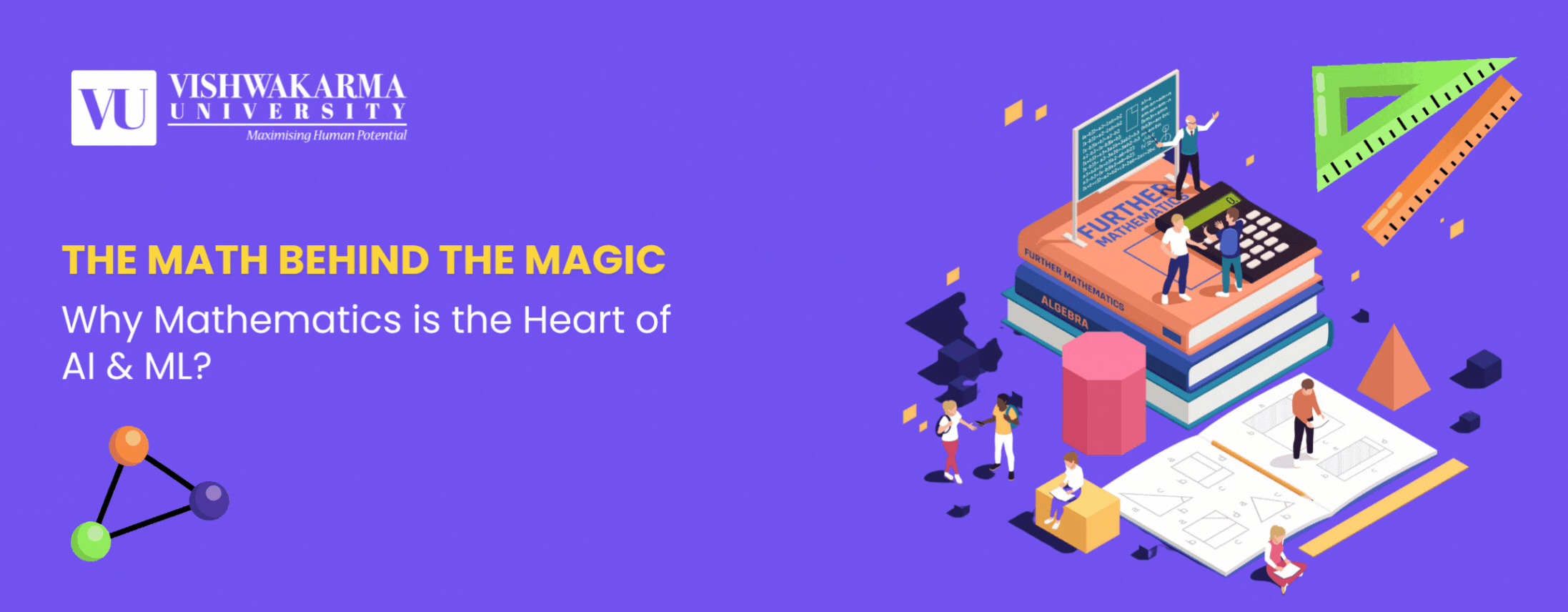Why is mathematics important for artificial intelligence and machine learning?
The foundation of AI and ML is mathematics. All machine learning models, algorithms, and neural networks that you can imagine would not be possible without mathematics. Optimization, no pattern recognition, and predictions would never exist without math.
What is the significance of mathematics to artificial intelligence?
At the heart of all AI systems, be it an autonomous car or a recommendation engine, mathematical models assist AI to consume, learn, and make sound decisions based on the data it receives. In order to study AI, a beginner in AI learning math would understand better the way data is processed and manipulated to achieve intelligent results.
The following are some of the examples of the importance of mathematics in AI:
- Data representation and manipulation, particularly in deep learning, is represented and manipulated using linear algebra.
- Models can also be used to optimize and change themselves with the use of calculus, such as gradient descent.
- Probability and statistics help AI to make decisions in a state of uncertainty and enhance predictions over time.
All these disciplines are important to guarantee that AI is able to learn, evolve and deliver meaningful results.
Mathematical Foundations of AI and ML
So, the important mathematics of AI and machine learning can be divided into four major areas: linear algebra, calculus, probability, and statistics.
1. Linear Algebra for AI
In AI, data is represented in linear algebra. It offers the means to operate with the data structures of vectors, matrices, and tensors (many-dimensional arrays), upon which machine learning algorithms operate.
- Data Representation: AI models process data in a common form of either matrices and vectors. Large datasets can be processed more effectively with the help of these structures.
- Data Transformation: Machine learning models, in particular neural networks, are based on linear algebra to implement data processing in multiple layers of transformations. Weights and activations are normally expressed as matrices and mathematical operations such as the multiplication of matrices is applied to generate output.
Real-life Example
An example of a task that can be solved by neural networks is an image classification task in which the neural network learns to classify objects in images. The pixels of the image are then translated into a number matrix, and linear algebra functions such as matrix multiplication are used to assist the AI to obtain significant features (edges, colors or textures) to classify the image.
2. Calculus for AI
Machine learning models need to be trained with the use of calculus, especially derivatives and gradients. Gradient descent is the most widespread optimization algorithm in ML that employs calculus in order to reduce the error or loss function.
- Optimization: Machine learning models are designed to reduce the distance between their output and the true output and this is known as the loss function. In order to accomplish this, the parameters of the model (e.g. weights of a neural network) are updated based on the gradients (derivatives of the loss function).
- Learning: Calculus in AI assists AI in learning, the parameters of the model are changed according to the feedback, and the predictions of the model are more accurate as time passes.
Real-life Example
In speech recognition models using deep learning, we optimize the performance of the model using calculus. In this model, weights are continuously adapted in every iteration and the prediction error is minimized thus making the model more accurate in its speech to text transcription.
3. Probability in AI
Probability assists the AI systems to deal with uncertainty. Most AI models, particularly decision making models, make use of probabilistic reasoning in predicting outcomes in case of incomplete or uncertain information.
- Prediction: Probability in AI is a term that is used to determine the probability of various events happening depending on past data. To take one example, in a spam filter, probability assists the AI to find out whether a particular email is likely to be spam or not.
- Bayesian Inference: Bayesian inference is one of the most valuable applications of probability in AI and can be described as the mechanism that helps to update its predictions based on new information or experiences.
Real-life Example
In medical diagnostics, AI systems are based on probability distributions, which predict the probability of a disease, according to the symptoms and test results, and this information can help doctors make a decision.
4. Statistics in Machine Learning
Statistics is important in the analysis of data and the evaluation of machine learning models performance. Statistical methods assist in determining the quality of performance of a model used and also in making sure that it does not overfit or underfit the data.
- Model Evaluation: This is done using statistical methods to measure the accuracy, precision and recall of a model and other significant measures.
- Data Analysis: Statistics is also an important aspect of machine learning that is used to determine patterns, correlations, and trends that can enhance the performance of the model.
Real-life Example
Statistical models are applied to detect fraudulent transactions on credit cards by using the statistical models to analyse the patterns of spending and detect an anomaly to show suspicious behaviour.
How much math is required for AI and machine learning?
The most frequent question of an introductory level is, “How much math is required for AI and machine learning?” It depends on the level into which you intend to delve in the field.
To have a simple conceptualization of AI, it is beneficial to pay attention to:
- Linear algebra: An insight into vectors, matrices and functions on matrices.
- Calculus: Understanding derivatives and optimization.
- Probability and statistics: An introduction to distributions, hypothesis testing, and some elementary statistics.
Key Takeaways:
- One does not have to be a professional in order to begin studying AI and ML.
- In AI, math beginners are concerned with such concepts as linear algebra or calculus, the pillars of machine learning.
- Specialised AI fields of application, such as deep learning, might need more advanced concepts, such as advanced calculus or Bayesian statistics.
Can You Learn AI Without Strong Math Skills?
A common myth is that you need to be great at math to succeed in AI and ML. While math for AI is essential, you don’t have to be an expert to start your learning journey. Many AI tools and libraries like TensorFlow and PyTorch, allow you to use AI without deep knowledge of the underlying math.
Nevertheless, to really comprehend the mechanics of AI and make advancements to your models, a strong understanding of essential math for AI will prove invaluable. It will enable you to gain a better insight into the algorithms and make better decisions in designing the models and optimising them to achieve better outcomes.
The Real-World Applications of Mathematics in AI and Machine Learning
Mathematics is not entirely theoretical in AI and ML, but it has real-world applications that influence our lives every day. The following are some of the practical applications of math in AI:
- Autonomous Vehicles: AI systems navigate with the help of linear algebra and calculus and decide and avoid the obstacles in real-time.
- Recommendation Systems: AI involves the use of probability and statistics to suggest products, movies, or music, according to previous behavior.
- Healthcare: AI uses probability to forecast the results of the disease and statistics to process medical data.
Introduction to Mathematics in Artificial Intelligence at Vishwakarma University
In case you are keen on the mathematical principles of AI and machine learning, Vishwakarma University can be the place where you take courses that will provide you with a solid mathematical background in AI and machine learning. We have extensive programmes which mean that you would not only learn the theory, but also be able to use it in the practical AI systems.
Explore our AI and ML programs at Vishwakarma University.
Frequently Asked Questions (FAQs)
- What kind of math is used in AI and ML?
The main branches of math that are applied to AI and ML are linear algebra, calculus, probability, and statistics. - Can I learn AI without strong math skills?
Yes, however, good knowledge of the fundamental concepts of math will make you create a more profound grasp of AI systems. - Why is linear algebra important for AI?
The methods of representation and manipulation of data are performed with the help of linear algebra, which is vital in the process of training AI models such as neural networks.




